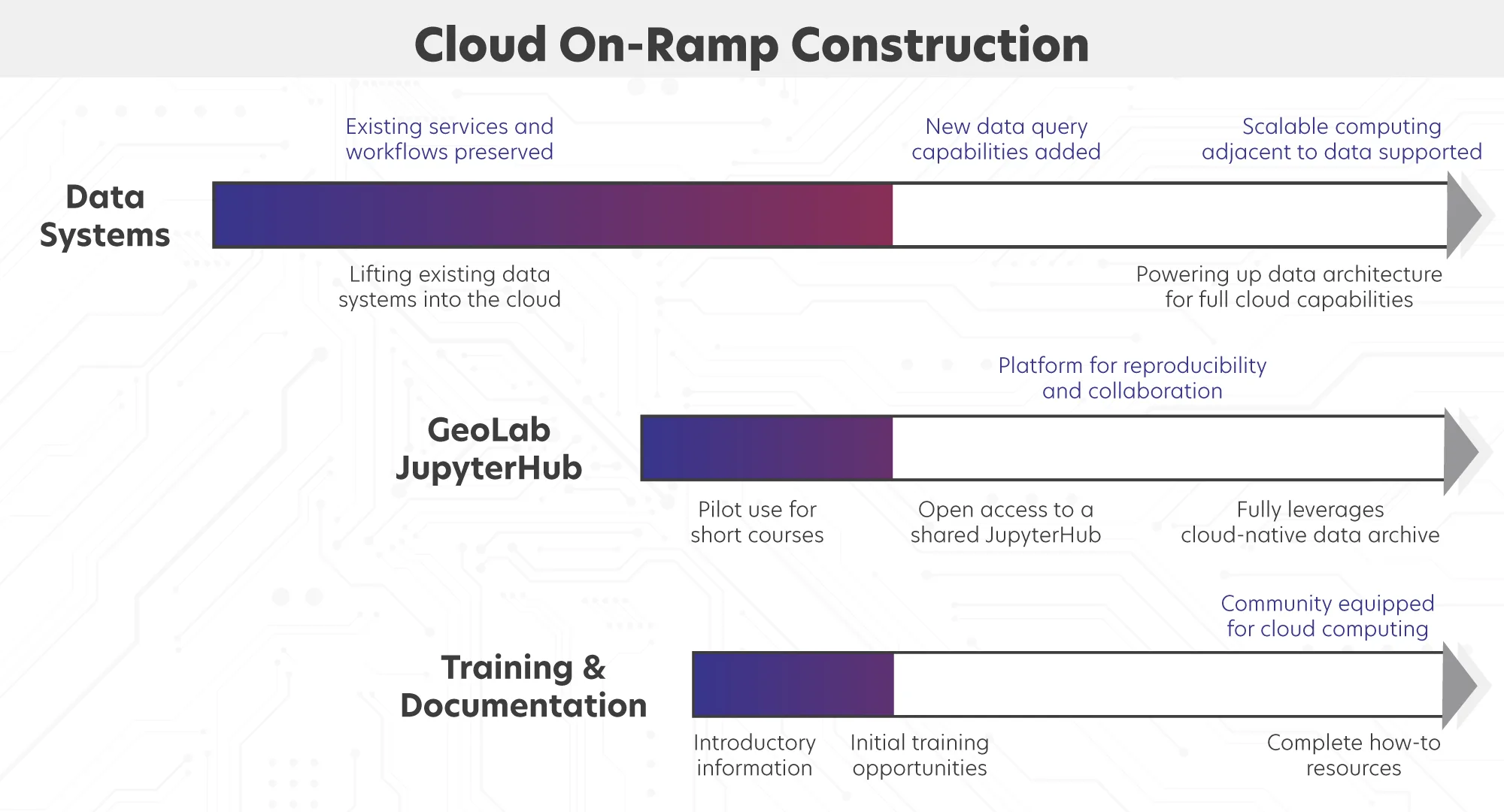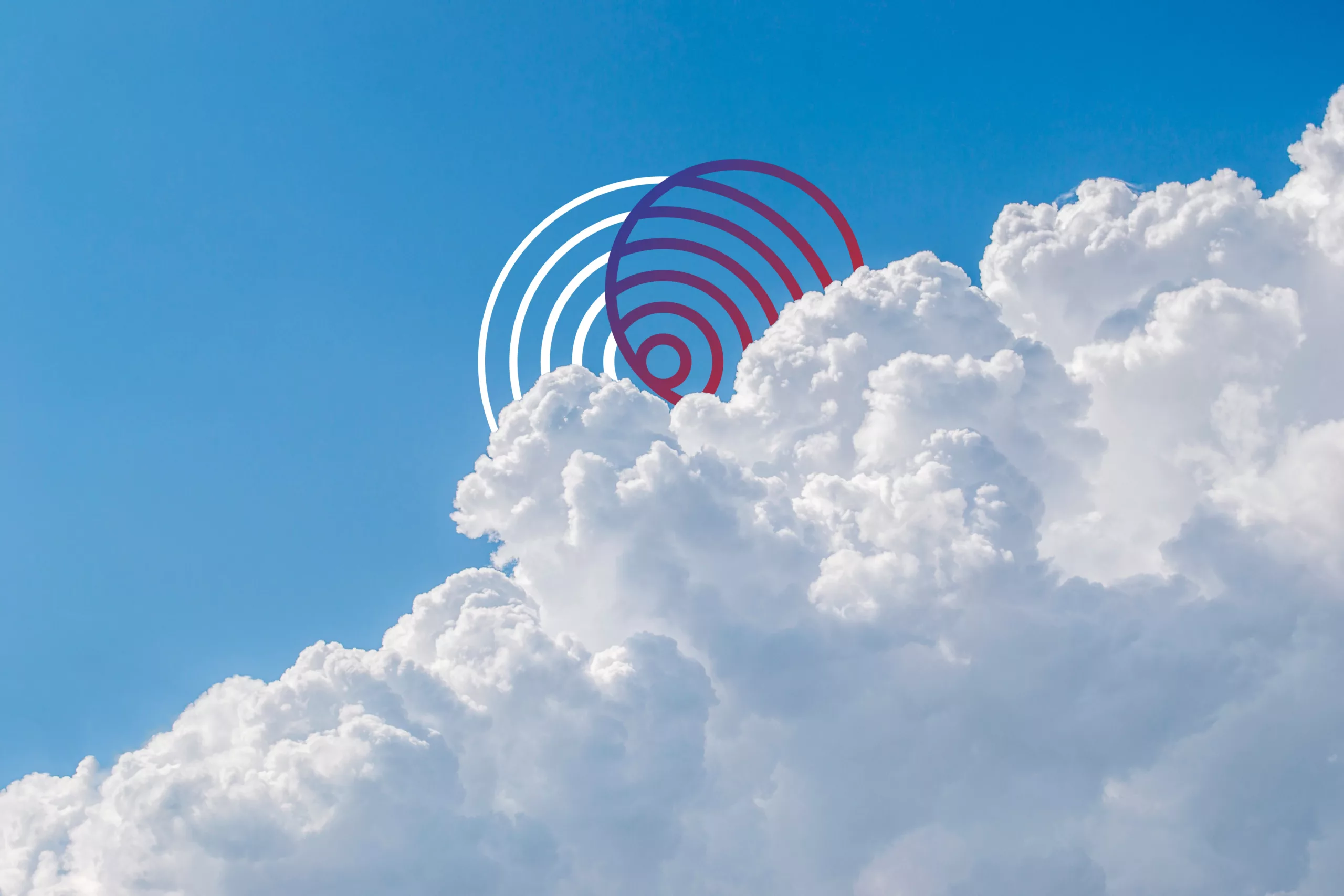The EarthScope-operated data systems of the NSF GAGE and SAGE Facilities are migrating to cloud services. With this transition comes new capabilities for users to use cloud computing for their own work, which will now be an incredibly powerful and efficient way to access these data archives.
We want to help those in the community who would like to learn the skills to take full advantage of cloud computing — an effort we call the Cloud On-Ramp. That includes both development of new tools and informational resources. In addition to the work on the data archives, a Jupyter-based notebook hub called GeoLab is being built to provide an entry point for data discovery and cloud workflows, as well as to facilitate training. Technical courses, tutorials, and documentation are being created to help you get started, and we’ll continue to expand these resources with your feedback.
You can bookmark this page and join our mailing lists for announcements and releases. We will be soliciting feedback along the way but if you have any questions now, contact us and ask.

News Updates
- Nov. 26, 2023 Cloud data operations: an update on our progress
- Feb. 27, 2024 Cloud computing, data access, software questions… ask the Data Help Desk!
- Apr. 11, 2024 With computational notebooks, code can tell a story
- May 28, 2024 SSA meeting recap: Harnessing the power of cloud computing
- June 3, 2024 Cloud case study: a seismic processing tutorial for your first foray
- July 29, 2024 A successful run for the first short course in the GeoLab notebook hub
- September 17, 2024 Pancakes are the future of geophysical data processing
- October 23, 2024 Cloud case study: Using DAS to listen to glacial meltwater streams
- November 26, 2024 Meet TileDB―one key to optimizing our data archives
- February 27, 2025 Cloud 101 short course at 2025 NSF GAGE/SAGE Community Science Workshop
- April 22, 2025 Cloud case study: Separating GNSS slow slip signals from noise
- June 9, 2025 Cloud computing at the Community Science Workshop
- July 3, 2025 Cloud case study: Mining the seismic archive for a new earthquake catalog
- September 15, 2025 An overview of cloud computing in the petabyte era of seismology


